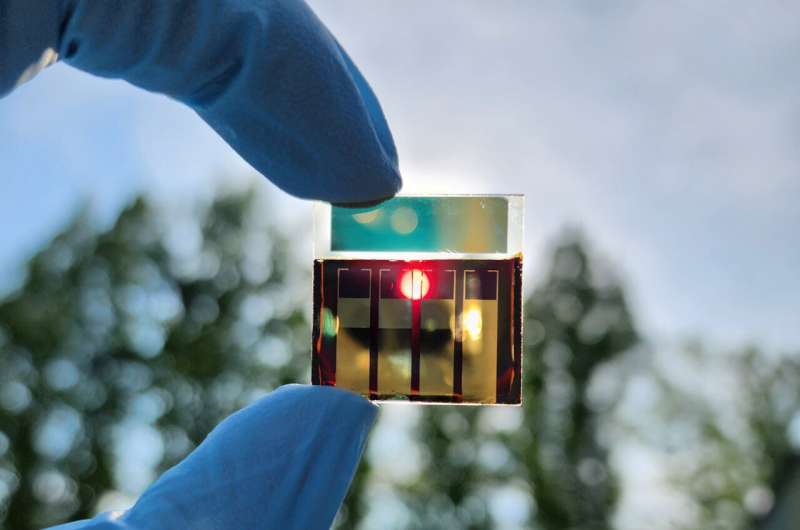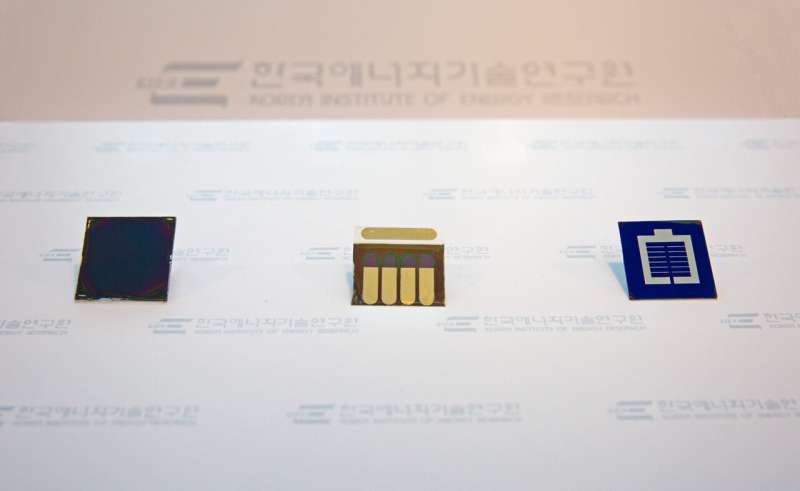

Semi-transparent perovskite solar cells achieve efficiency of 21.68%
source link: https://techxplore.com/news/2024-02-semi-transparent-perovskite-solar-cells.html
Go to the source link to view the article. You can view the picture content, updated content and better typesetting reading experience. If the link is broken, please click the button below to view the snapshot at that time.
February 21, 2024
Semi-transparent perovskite solar cells achieve efficiency of 21.68%
by National Research Council of Science and Technology

The Photovoltaics Research Department of the Korea Institute of Energy Research (KIER), working with the KIER Energy AI and Computational Science Lab, has achieved advancements in the stability and efficiency of semi-transparent perovskite solar cells.
These cells have the potential to be used in building windows and tandem solar cells. The semi-transparent solar cells achieved a record-breaking efficiency of 21.68%, making them the most efficient among the perovskite solar cells using transparent electrodes in the world. Additionally, they showed remarkable durability, with over 99% of their initial efficiency maintained after 240 hours of operation.
In order to reach carbon neutrality by 2050, the key lies in attaining 'ultra-high efficiency' and 'diversifying the application areas' of next-generation solar cell technology, overcoming constraints in installation spaces and national land area. This requires efficient and multi-functional technologies like tandem solar cells and solar cells for windows. Highly efficient and stable semi-transparent perovskite solar cells are required in both technologies.
For the fabrication of semi-transparent perovskite solar cells, it is necessary to replace the metal electrodes of conventional opaque solar cells with transparent electrodes that allow light to pass through. During this process, high-energy particles are generated, leading to the degradation of the performance of the hole transport layer.
To prevent this, it is common to deposit a metal oxide layer that acts as a buffer between the hole transport layer and the transparent electrode layer. However, compared to opaque solar cells produced under the same conditions, the charge-transporting properties and stability of the semi-transparent devices are reduced, and the exact causes and solutions have not been clarified.
The researchers utilized electro-optical analysis and atomic-level computational science to identify the causes of the reduced charge transporting properties and stability that occur during the fabrication of semi-transparent perovskite solar cells.

Through this, they discovered that lithium ions (Li), added to increase the electrical conductivity of the hole transport layer, diffuse into the metal oxide layer that serves as a buffer, ultimately changing the electronic structure of the metal oxide buffer layer into that degrades its characteristics.
Furthermore, beyond identifying the cause, the researchers solved the problem by optimizing the oxidation time of the hole transport layer. They found that converting lithium ions into stable lithium oxide (LixOy) through optimized oxidation mitigates the diffusion of lithium ions, thereby enhancing the stability of the device. This discovery reveals that lithium oxide, previously considered a simple reaction byproduct, can play a crucial role in improving efficiency and stability.
The developed process resulted in semi-transparent perovskite solar cells with an impressive 21.68% efficiency, the highest among all transparent electrode perovskite solar cells. In addition, this research demonstrated an impressive retention of over 99% of its initial efficiency for 400 hours in dark storage and for more than 240 hours in continuously illuminating operational conditions, showcasing its outstanding efficiency and stability.
More information: Syed Dildar Haider Naqvi et al, Mitigating Intrinsic Interfacial Degradation in Semi‐Transparent Perovskite Solar Cells for High Efficiency and Long‐Term Stability, Advanced Energy Materials (2023). DOI: 10.1002/aenm.202302147
Recommend
About Joyk
Aggregate valuable and interesting links.
Joyk means Joy of geeK